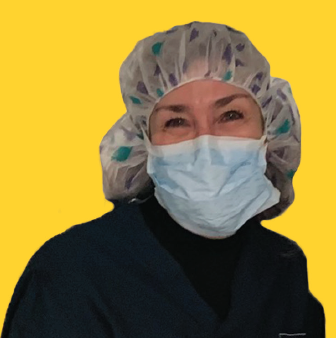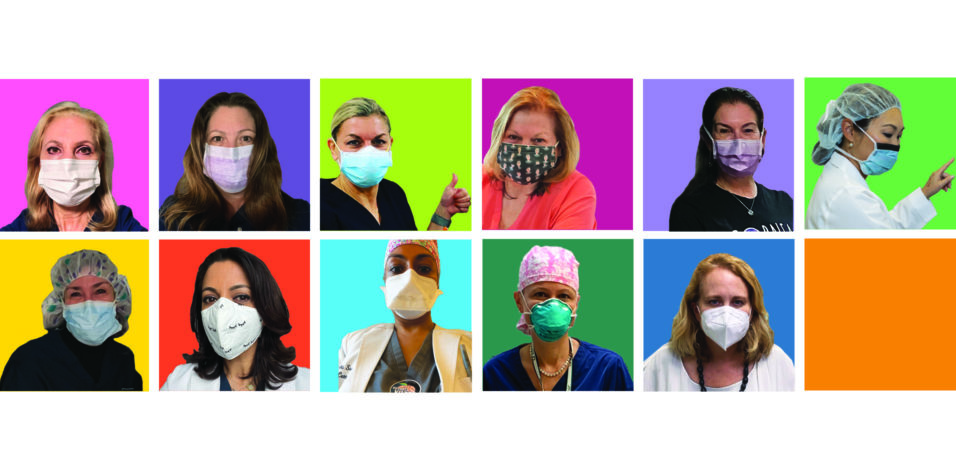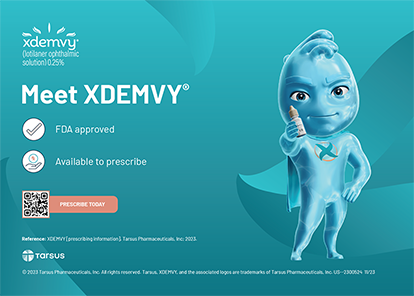
Many of us practicing ophthalmology anticipated that 2020 would be the Year of Eye Care. The lofty goals we had for 2020, however, were quickly eclipsed by the worldwide spread of SARS-CoV-2. Here we are, about 1 year after lockdown ended, still navigating the nuances of patient care in the midst of a pandemic.
For many reasons, the good work that we as part of the health care community have done to protect our patients during the COVID-19 crisis will continue for months and years to come. Some of the changes we’ve made will be long-lasting, whereas others will likely fade in time. Here are some predictions of what ophthalmology practice will look like after the COVID-19 era. We are, however, far from that time.
FIRST WAVE
As news of the severity of COVID-19 spread and lockdowns were instituted around the world, we eye care professionals were forced to reduce our caseloads to urgent and emergent care only. In the background, however, many of us worked diligently to prepare our practices for a safe return to patient care.
At Chesapeake Eye Care & Laser Center, we instituted a number of new policies and processes, including the following:
- Patients were scheduled in a way that reduced the number of overlapping appointments;
- More than half (70%) of the chairs were removed from our reception area and waiting rooms to maintain proper social distancing;
- Patients were asked to wait in their vehicles until they received a text-based alert to enter our office;
- Patients checked in and verified their insurance coverage at a kiosk rather than with a staff member;
- Plastic screens were installed at the front desk, in the exam lanes, and in the schedulers’ offices;
- Temperature screenings were performed;
- Screening questions were asked of patients on the day before their visits and again on the day of their visits, and patients who presented with symptoms were asked to reschedule their appointments or surgery; and
- Patient workflow changed so that technicians, scribes, and doctors rotated to the patients in lieu of having patients move from room to room for diagnostic exams.
This last protocol is my favorite change that we made during the pandemic. Not only does it make cleaning more efficient, but it also reduces the time it takes an elderly person to move through the practice. Another positive change is our increased use of optometrists for postoperative care, which reduces the number of patients on surgeons’ schedules and makes the day more pleasant for everyone.
UPDATES
At the time of this writing, we continue to use the protocols that we put in place early in the pandemic, and we will maintain them until we feel we are well on our way to the recovery phase of COVID-19. As we move closer to normalcy, however, we will ease some of the restrictions.
In the near future, we plan to eliminate temperature checks, and we are considering allowing patients to bring one family member or friend to their appointments (currently only those who require mental or physical assistance are allowed to bring someone). It is important for patients to have the support of family and friends when they learn about procedures, surgery, and disease treatments. Even as COVID-19 protocols ease at our practice, however, patients will not be permitted to bring multiple people to appointments.
PREDICTIONS
Masks. Probably the most negative effect of COVID-19 is the need to wear a mask. I miss seeing the smiles of patients when they regain their sight. I feel interactions with them are less intimate simply because it is harder to convey warmth, care, and concern through a mask. Unfortunately, mask wearing will not end anytime soon. Given how close we are to patients, I believe that we will all continue to wear masks after the pandemic is over. I hope, however, that we can transition to wearing surgical masks instead of uncomfortable N95 masks.
Physical contact. Patients and physicians alike are reluctant to hug or shake hands. This, too, affects the ways in which we connect with patients. For some elderly patients, the appointment at our center is the only interaction they have with another person all week. Our ability to give them a hug, put a hand on their shoulder, or squeeze their hand provided a level of comfort and connection that we can no longer give them. Even when it is safer to resume physical contact, we will see patients who are uncomfortable with physical touch. In the future, we will have to work hard to find new ways to nurture our connections with patients.
Fatigue. At every stage of this pandemic, we have had to be creative in how we work through the day, and that takes a toll on our physical and emotional well-being. I used to have so much energy at the end of a full clinic or surgery day that I would play three sets of tennis or go water skiing. I find myself much more fatigued after trying to talk through an N95 mask all day long. Additionally, instead of enjoying a break with my colleagues, I retreat to my office to remove my mask and have a quick bite to eat. Many days in surgery, I don’t remove my mask to eat or drink all day. Our staff and physicians experience similar fatigue. Lastly, even though I am not able to see the volume of patients or perform as many surgeries as I did in 2019, I have taken less vacation and worked more days since we reopened the practice after the initial lockdown.
Conversion rates. On a positive note, surprisingly, more patients are opting for premium IOLs and femtosecond laser astigmatism correction. Maybe they are focusing on the value of their health and investing in their well-being. Perhaps they did not spend much on vacations and travel in the past year and have decided to spend the money on themselves. Through the strong efforts of our staff, doctors, and administrative personnel, our practice revenue ended 2020 down only 10%. I am hopeful that this trend in conversions—whatever its cause—will continue into 2022 and that we will see more patients opt for the premium services we provide.
CONCLUSION
It is important to understand that COVID-19 is not over. Most of us have COVID fatigue, but we must not become complacent. Handwashing, social distancing, and mask wearing remain critical to keeping our patients, staff, and physicians safe.
Embracing change can improve the framework of our practices and enhance the patient experience. I am encouraged by the resiliency of the doctors and staff I work with and the patients we treat. We might have fallen short of our goals for the Year of Eye Care, but to paraphrase my friend Tony, there are low and high tides in life. The low tide can still be beautiful.




